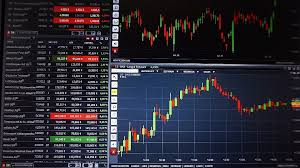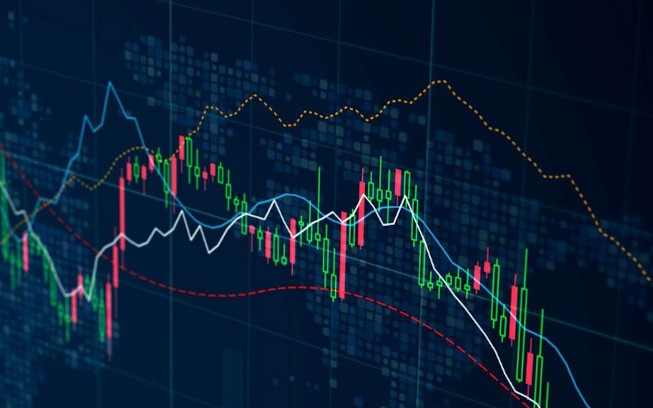
In the dynamic world of forex trading, identifying the right indicators can significantly enhance your ability to make informed decisions. Whether you’re a beginner or an experienced trader, understanding and utilizing effective trading indicators is crucial for maximizing your profits. One great resource for traders looking to improve their performance is best indicators for forex trading Trading Platform VN. In this article, we will explore some of the best indicators for forex trading, explaining how each one works and how you can apply them to your trading strategy.
1. Moving Averages (MA)
Moving averages are perhaps the most commonly used indicators in forex trading. They smooth out price data by creating a constantly updated average price. Traders often use two types of moving averages: Simple Moving Average (SMA) and Exponential Moving Average (EMA). SMA gives equal weight to all data points, while EMA places more weight on the most recent prices, making it more responsive to new information.
Moving averages can be used to identify trends. A common strategy is to look for crossover points, where a short-term MA crosses above a long-term MA, signaling a potential buy, while the reverse signals a sell. Moving averages also provide support and resistance levels that can inform entry and exit points.
2. Relative Strength Index (RSI)
The RSI is a momentum oscillator that measures the speed and change of price movements. It ranges from 0 to 100 and is typically used to identify overbought or oversold conditions in the market. An RSI above 70 may indicate that a currency pair is overbought, while an RSI below 30 suggests it may be oversold.
Traders use the RSI to assist with signaling potential reversals. When the RSI diverges from price movements (for example, when price makes a new high but the RSI does not), this can indicate a potential reversal. The RSI is most effective when used in conjunction with other indicators to confirm signals.
3. Moving Average Convergence Divergence (MACD)
The MACD is a trend-following momentum indicator that shows the relationship between two moving averages of a security’s price. It consists of the MACD line, the signal line, and the histogram. When the MACD line crosses above the signal line, it’s generally considered a bullish signal, indicating that it might be a good time to buy. Conversely, when the MACD line crosses below the signal line, it suggests a bearish signal.

Additionally, the MACD histogram can indicate the strength of the trend. The further the histogram is from the zero line, the stronger the trend. This indicator can be combined with others like RSI for confirmation.
4. Bollinger Bands
Bollinger Bands consist of a middle band (SMA) and two outer bands that are standard deviations away from the SMA. This indicator is useful for determining overbought or oversold market conditions. When price approaches the upper band, it may be overbought; when it reaches the lower band, it might be oversold.
Traders often use Bollinger Bands to identify potential breakout points. When the price breaks through the upper or lower band, it signals a continuation of the trend. The width of the bands can also indicate market volatility; wider bands signal high volatility, while narrower bands signal low volatility.
5. Stochastic Oscillator
The Stochastic Oscillator compares a particular closing price of a currency pair to a range of its prices over a set number of periods. The result is a value between 0 and 100, where values above 80 indicate an overbought condition and values below 20 indicate an oversold condition.
This oscillator is particularly effective in ranging markets. Traders typically look for the %K line crossing above the %D line to signal a buying opportunity and vice versa for a sell signal. As with other indicators, the stochastic oscillator should be used in conjunction with others to confirm trading signals.
6. Average True Range (ATR)
ATR is a volatility indicator that measures market volatility by decomposing the entire range of an asset for that period. Unlike many other indicators that focus on price direction, ATR assesses volatility, which can help traders set exit points and stop-loss levels. High ATR values indicate high volatility, while lower values suggest a steady market.

ATR is mainly used to determine how much price movement is expected in the near future. This information can be invaluable for managing risk, as traders can adjust their position sizes and stop-loss orders based on current volatility levels.
7. Fibonacci Retracement Levels
Fibonacci retracement levels are a popular tool among traders for identifying potential reversal levels in the market. By applying Fibonacci levels to a recent significant price movement (high to low), traders can anticipate where prices might pull back before continuing in the original direction. Common Fibonacci levels include 23.6%, 38.2%, 50%, 61.8%, and 78.6%.
Many traders watch these levels for potential reversals or breakouts, particularly when combined with other indicators. Fibonacci levels can offer insights into potential areas of support or resistance.
8. Ichimoku Cloud
The Ichimoku Cloud is a comprehensive indicator that provides information about support and resistance, trend direction, gauge momentum, and give buy/sell signals in a single glance. It consists of five lines: Tenkan-sen, Kijun-sen, Senkou Span A, Senkou Span B, and Chikou Span.
When price is above the cloud, it signals a bullish trend; when below, a bearish trend. The strength of the trend can be gauged with respect to the cloud’s thickness, while crossovers of the Tenkan-sen and Kijun-sen can provide buy or sell signals. The Ichimoku Cloud is beneficial for providing a holistic view of price action that can help traders make well-informed decisions.
Conclusion
Choosing the right indicators for your forex trading strategy is crucial to your success as a trader. These indicators offer insights into market trends, price momentum, and volatility, helping traders make informed decisions. However, no single indicator is foolproof; using a combination of indicators aligns with your trading strategy can enhance your success rate.
Continuous practice and understanding of how these indicators can work together are key to becoming a proficient forex trader. Start implementing these best indicators for forex trading into your strategy today and watch your trading performance improve over time!


Write a comment: